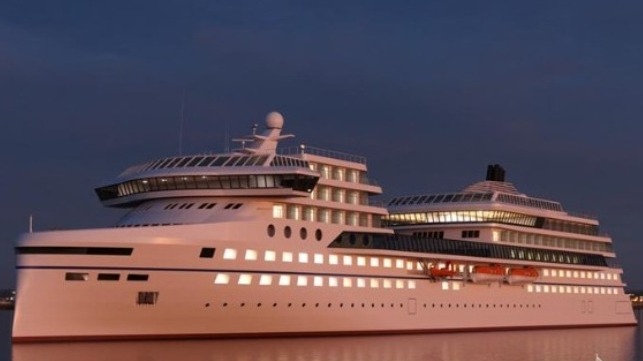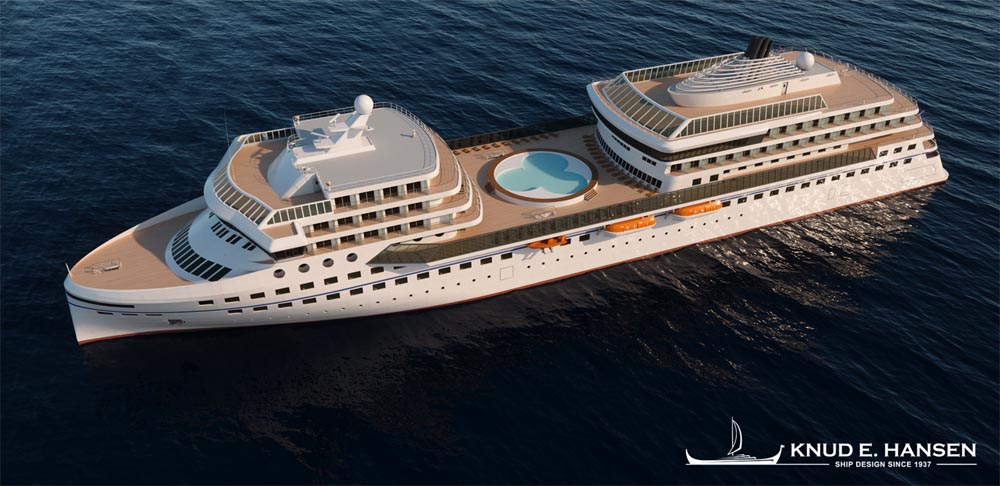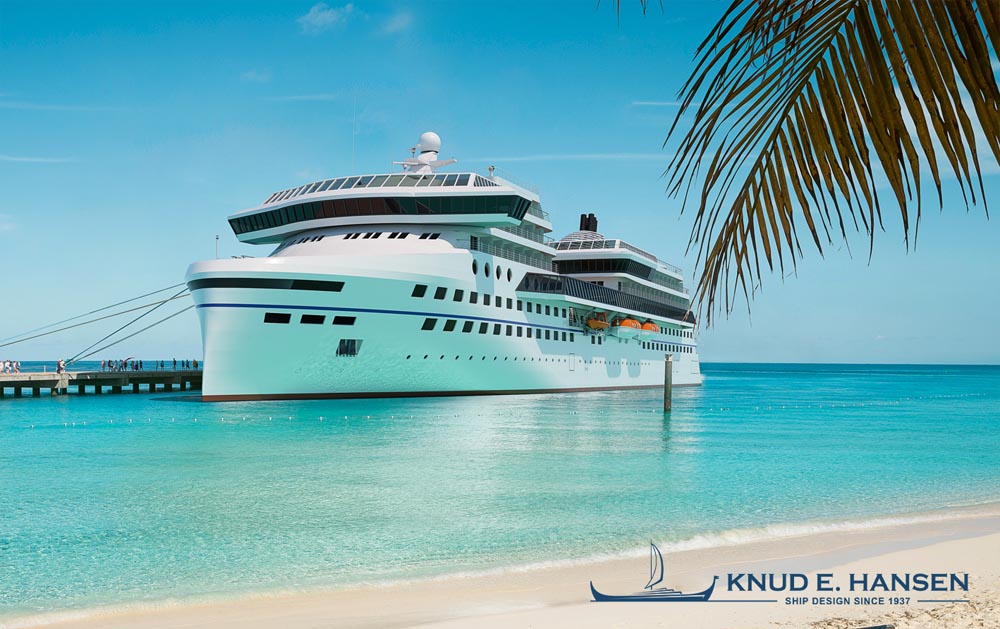New Cruise Ship Design Focuses on Health, Safety and Energy

Passenger health and safety, along with energy optimization are the hallmarks of a new expedition cruise vessel design developed by the naval architects, marine engineers, and designers at Knud E. Hansen. The concept is for an expedition cruise ship accommodating up to 400 passengers designed to appeal to both the adventure cruise market and eco-tourism.
Reflecting the concerns of a post-pandemic world, the Hansen firm sought to develop a ship that is safe, clean, and efficient. They brought together leading experts to manage disease prevention and control, state-of-the-art facilities, and protocols, in conjunction with high-efficiency HVAC systems and related airborne and surface disinfection technology.
At a length of 150 meters and with a cruising range of approximately 6,500 nautical miles, Hansen says the design will appeal to passengers who prefer a more intimate cruise experience while visiting destinations that are inaccessible by other ships.
Also being sensitive to the growing appeal of the eco-tourism market, Hansen’s design aims to minimize the ship’s carbon footprint and reduce pollution. It incorporates several technological innovations, including a large battery bank and a diesel-electric propulsion system, which includes four medium-speed diesel generators. Two azimuth pod units and two bow thrusters would provide flexible propulsion and maneuverability, while a pair of retractable fin stabilizers would reduce roll motions.

Named the Phoenix World Village, the new Hansen design harkens back to the 1980s Phoenix World City concept developed by Knut E. Hansen for legendary shipping executive Knut Kloster. The groundbreaking 1980s design envisioned creating a floating global community, accommodating 5,200 passengers with multiple accommodation blocks resembling a cityscape. Considered ahead of its time, the Phoenix World City explored new concepts in design influencing the future of the cruise industry.
The new Phoenix World Village expedition cruise vessel seeks to capture the same innovative spirit of its namesake with an unconventional layout featuring separate forward and aft accommodation blocks. In between the block would be an open deck featuring public spaces, a number of small restaurants with outdoor seating, as well as a pool and jogging area. Additional public spaces include multiple restaurants, lounges, bars, a café, library, card room, games room, spa and fitness area, sun deck, as well as a one-of-a-kind observation lounge overlooking the engine room. The vessel also features a large tender garage for stowing zodiacs and other expedition equipment that can be easily launched from the aft tender station.
The majority of passenger cabins have private balconies with expansive ocean views. The passenger cabins feature the Knud E. Hansen ‘Flex Cabin System’, which allows for cabin walls to be easily reconfigured between sailings to convert a single, luxury suite into two separate cabins. This allows the operator to maximize revenue based on specific demand.
Reflecting the increased concerns for healthy cruising, VIKAND developed the medical facilities design, installation, staffing, and maintenance requirements, along with the leading protocols for prevention and management of illnesses and medical emergencies. VIKAND’s Hygensea solution for disinfecting air and surfaces would be installed throughout the vessel through a simple addition to the HVAC system. The technology uses uniquely safe and effective hydroxyl technology, replicating outdoor air in an indoor environment. In addition to greatly improved air quality, significant fuel savings will also be achieved through reduced thermal loads.
Energy savings will be achieved by employing enhanced HVAC engineering and electrical power distribution systems from HVACON Marine Systems. Their self-adaptive system would provide savings on both ventilation and chilled water distribution. The enhanced functionality would provide valuable information, and remote service and support. The new HVACON FORCE System is a 100 percent natural product, which reduces electrical resistance, thereby saving energy. Furthermore, the system reduces harmonic disturbance and electrical heat up to 30%.

The Phoenix World Village is designed to be fully SOLAS compliant, achieving the highest level of survivability. Hansen notes that its strict adherence to Safe Return to Port (SRtP) requirements through the inclusion of redundant, segregated power and propulsion systems as well as passenger safe havens and an auxiliary wheelhouse.
Main Dimensions:
Length (OA 150,8 m
Length (PP) 144,3 m
Breadth (WL) 24,0 m
Breadth (Max) 30,0 m
Depth (molded to Deck 3) 7,5 m
Scantling Draught 5,8 m
Design Draught 5,5 m
Deadweight ~1500 t
Service Speed 16 knots
Passenger Capacity 400
Crew and Officers 147
Expedition Crew 8
